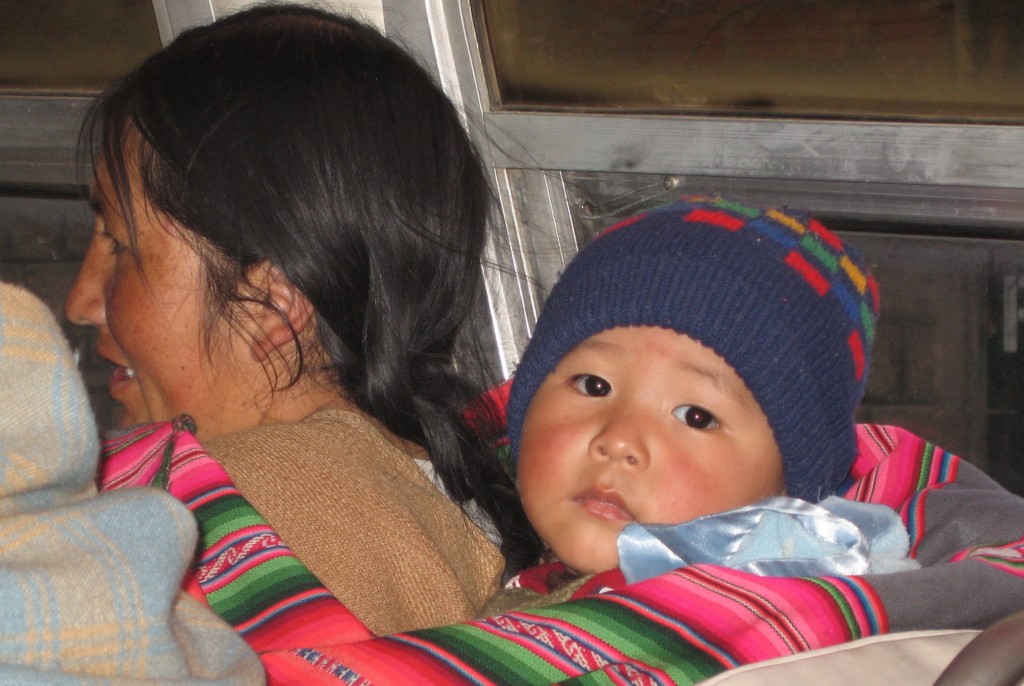Ruth Padilla DeBorst
 2014 is closing with a world at war. While bombs explode in one corner of the globe, police brutality takes lives in another, revealing the twisted logic of violence and racism. While drought castigates some areas, floods threaten the livelihood of people and entire eco-systems in another, revealing the deadly consequence of unbridled consumption and exploitation of creation. While women and children are bought and sold in oh, so many places, a government riddled with corruption hands a couple dozen young people over to be murdered by gangs. While a tiny minority takes off in private jets to luxurious vacation spots, millions wander the earth as homeless refugees and unwanted immigrants. These are dark, unjust days.
2014 is closing with a world at war. While bombs explode in one corner of the globe, police brutality takes lives in another, revealing the twisted logic of violence and racism. While drought castigates some areas, floods threaten the livelihood of people and entire eco-systems in another, revealing the deadly consequence of unbridled consumption and exploitation of creation. While women and children are bought and sold in oh, so many places, a government riddled with corruption hands a couple dozen young people over to be murdered by gangs. While a tiny minority takes off in private jets to luxurious vacation spots, millions wander the earth as homeless refugees and unwanted immigrants. These are dark, unjust days.
So were the days during which the women and men portrayed in the New Testament lived. Greeks, Persians, Romans and Jews, all with their own diverse cultural, linguistic, socio-economic and religious expressions, were forced to mix and clash as a result of Roman conquest, colonization, and emigration. Traditions were being challenged, identities were shifting, and many felt uprooted, at a loss –especially the people at the bottom of the totem pole. Of course, according to the official story, peace ruled. Borders were secured by the emperor’s legions. Surely taxes and tributes were burdensome –especially when the benefit was mostly seen in far-off centers of power–, but then again, they did guarantee security, stronger armies and taller walls. The slightest disturbance was swiftly repressed; torture was a common practice, and served as a deterrent. Temples were places of worship where the conquering forces imposed their gods on the people forcibly incorporated into Rome’s domain. Honor and unquestionable allegiance, naturally, were due the emperor, the self-titled “Lord and Savior”, who so effectively imposed peace and kept unity among such a multi-cultural, multi-ethnic and multi-religious array of people. Those were the days of the Pax Romana.
Pax Romana was fragile, pounded precariously together with cross nails and oppressive taxation. But one night, angels shattered the repressed silence with joyful songs of “Peace on Earth!” They announced a different kind of peace to a weary people: the long-awaited Prince of Peace had broken into history in the shape of a poor working class baby in an insignificant corner, far from the seats of Roman and Temple power. The gospels show a King whose rule was not marked by military or economic might but instead by peace-making, and compassionate justice. Jesus gave himself away, granting sight to the blind, feeding the hungry, liberating the oppressed, affirming the dignity of women, children and others who were marginalized in Jewish society. He put down the self-righteous religious leader and praised the socially despised tax collector. He healed leapers, the HIV/AIDS victims of his day, and restored them to the community. Rather than imposing security through repression and death, Jesus took on the scornful cross in loving sacrifice. In so doing, he unveiled as deceitful the powers of death that held people estranged. Christ, our peace, effected salvation, giving new life to the dead: reconciled relations with God, healing from enmity to a broken humanity and restoration to the entire created order. This is surely Good News of true peace, Pax Christi.
As followers of the Prince of Peace, we are called to extend that peace, Pax Christi. Thanks to Christ’s peace-making life, death, and on-going ministry through the Spirit, we can work for peace in loving, creative and hopeful ways, even in the midst of a world at war. So as we celebrate Jesus’ birth during this season, let’s pray for all who suffer the ravages of violence and ecological degradation. Let’s turn away from false facades of peace. And let’s work for peace, together, each according to our gifts, callings and opportunities, fully trusting that it is not by might, nor by power but by the Spirit that just peace can be sown!





